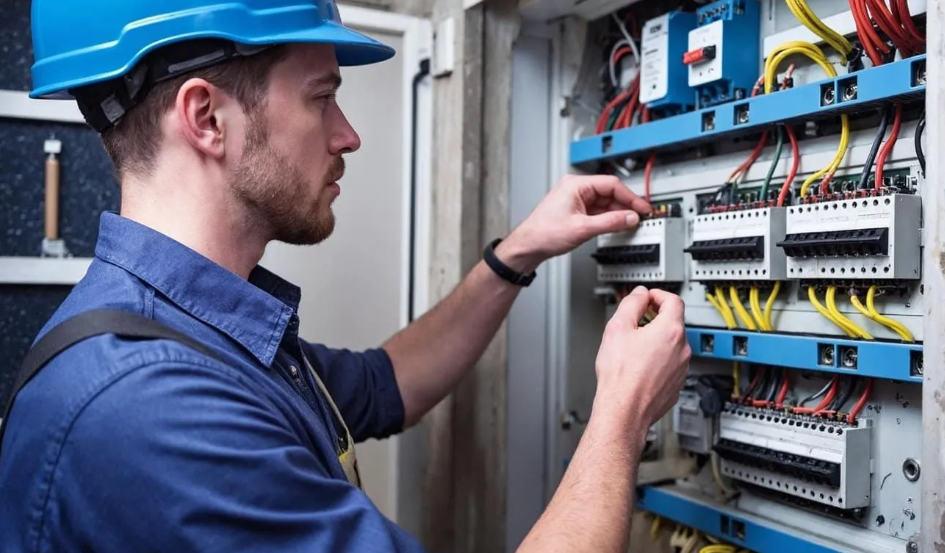Remodeling your home is an exciting process—one that brings new energy, functionality, and comfort to your space. But before you dive into choosing paint colors or flooring, it’s essential to think about something less glamorous but far more critical: your electrical system. Working with a qualified electrician Alice Springs is one of the most important steps you can take to ensure your remodel is both safe and efficient.
Electrical upgrades are not just about adding new outlets or light fixtures; they’re about future-proofing your home. Whether you’re remodeling a kitchen, updating a bathroom, or converting a basement, your electrical system must be able to handle the increased load and new technologies. Here’s how to plan your electrical upgrades the right way before construction begins.
1. Evaluate Your Current Electrical System
Before you start tearing down walls, have your current electrical system assessed by a licensed electrician. This evaluation helps determine whether your existing wiring, outlets, and switchboard can handle the new additions. Older homes, especially those built before modern electrical standards, often have outdated wiring that can’t safely support today’s energy demands.
An electrical inspection will highlight areas that may need to be replaced or upgraded, such as:
- Worn or damaged wiring
- Insufficient circuits for modern appliances
- Outdated fuse boxes or panels
- Lack of safety features like GFCI or AFCI outlets
Identifying these issues early prevents costly rework later in your remodel.
2. Plan for Your Future Electrical Needs
Think long-term when planning your remodel. Modern living relies heavily on technology, from smart appliances and home offices to entertainment systems and charging stations. Consider your current lifestyle and how it might evolve in the coming years.
For instance, if you plan to install a home theater, electric vehicle charger, or solar panels, discuss these plans with your electrician before remodeling begins. This allows them to design a system that accommodates future upgrades without additional invasive work.
Key questions to ask yourself include:
- Do you need more outlets in certain rooms?
- Will you be adding high-power appliances?
- Do you want USB or smart outlets integrated throughout your home?
- Is your lighting layout flexible enough for your design vision?
3. Understand Building Codes and Permits
Every remodel must meet electrical codes and regulations designed to ensure safety. Your electrician will handle permit requirements and ensure that all work complies with current standards. Ignoring this step could result in costly delays or even unsafe wiring that fails inspection.
Professional electricians are trained to stay up to date with code changes. They will know what’s required for your type of project—whether that involves grounding, circuit protection, or proper load balancing. Getting these details right the first time saves time and money later.
4. Design an Electrical Layout That Complements Your Remodel
The electrical plan is just as important as the floor plan. Collaborate with your electrician to map out where outlets, switches, lighting fixtures, and appliances will go. Consider both aesthetics and practicality.
For example:
- Install outlets where furniture and appliances will sit to avoid visible cords.
- Plan for layered lighting—ambient, task, and accent lighting—to enhance functionality and atmosphere.
- Include adequate outlets in kitchens and bathrooms, as these areas tend to have the highest electrical demands.
Having a clear, detailed layout helps ensure a smooth installation process during construction.
5. Prioritize Energy Efficiency
A remodel is the perfect time to make your home more energy-efficient. Modern LED lighting, smart thermostats, motion sensors, and efficient wiring systems can significantly reduce your energy bills.
Ask your electrician about sustainable options like:
- LED lighting retrofits
- Smart home automation
- Energy-efficient appliances
- Proper insulation around wiring to reduce heat loss
Energy-conscious upgrades not only help the environment but also increase your home’s long-term value.
See also: Cabinet Makers in Mackay: Transforming Spaces with Quality Craftsmanship
6. Budget Wisely for Electrical Work
Electrical work can be one of the most underestimated costs in a remodel. Create a detailed budget with your electrician that includes materials, labor, permits, and potential upgrades. Be sure to leave a buffer for unexpected issues, especially if you’re renovating an older home.
A transparent quote from a reputable electrician ensures there are no surprises once work begins. Don’t simply choose the cheapest option—quality workmanship and safety are worth the investment.
7. Schedule the Electrical Work Strategically
Timing is key. Electrical upgrades should be completed before walls are closed up or major fixtures are installed. Coordinate with your contractor to make sure the electrician has enough access and time to complete their work without rushing. Proper sequencing avoids costly delays and ensures everything runs smoothly once power is restored.
Final Thoughts
Electrical planning is one of the most crucial yet overlooked aspects of remodeling. Taking the time to assess, design, and implement your electrical upgrades before construction begins ensures your project runs safely, efficiently, and within budget.
By working with an experienced professional like an electrician alice springs, you’ll gain peace of mind knowing that your electrical system is built to handle your current and future needs. Whether you’re upgrading a single room or transforming your entire home, thoughtful electrical planning lays the foundation for a remodel that truly shines—literally and figuratively.





